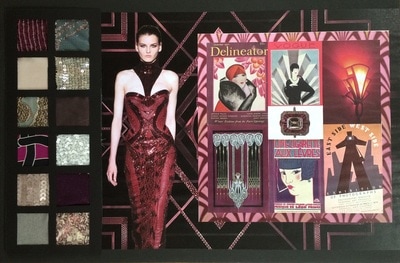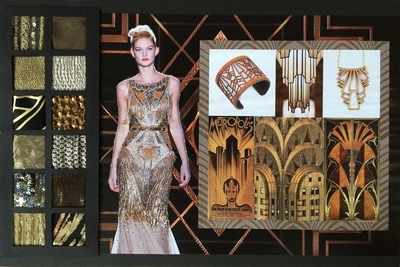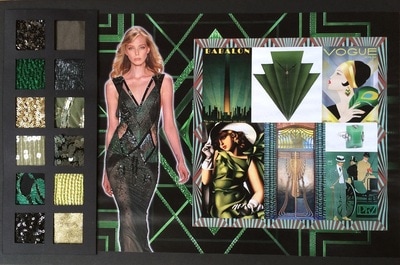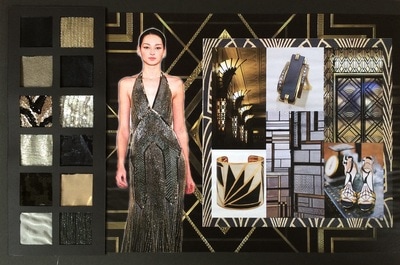|
In the years following World War I, design styles experienced numerous developments and transformations. The playful Art Moderne style that emerged in France and the geometric Modernism style that emerged in Germany both received international popularity between the 1920s and 1940s. These combined styles later became known as Art Deco. The design was often characterized by rich colors, bold geometric shapes, and lavish ornamentation. Historical influence referenced Egyptian themes following the discovery of Tutankhamun's tomb in 1922. Unlike the heavy organic motifs of the preceding Art Nouveau style, Art Deco combined traditional craft motifs with Machine Age imagery and materials as a result of the rapid spread of industrialism. Historian Bevis Hillier defined the period as "an assertively modern style [that] ran to symmetry rather than asymmetry, and to the rectilinear rather than the curvilinear; it responded to the demands of the machine and of new material [and] the requirements of mass production."
The term Art Deco derived from the L'Exposition Internationale des Arts Decoratifs et Industriels Moderns exhibition held in Paris in 1925. The popularity of industrialism fueled the movement's early focus on functionalism with designs applicable to mass production. In America, architecture and the decorative arts were strongly influenced by Art Deco during this time. Parisian inspired decoration became the most readily identifiable style of the 1920s and remained prominent in America long after it was out of style in France. In women's fashion, jewelry lines became more streamlined and angular to complement changing dress silhouettes. They were defined by new forms, color combinations, and cuts of stones. Graphic design followed similar lines and was often influenced by the Plakatsil and Cubist styles with simplified silhouettes, geometric shapes, and typography. The style of Art Deco represented the luxury, extravagance, and glamour of the Machine Age and growth of consumerism. In recent years, there have been repeated periods of revival as the style has been highlighted in graphics, film, and fashion. The 2013 remake of The Great Gatsby influenced numerous designers of evening wear including Versace, Badgley Mischka, J Mendel, and Ralph Lauren. Gown silhouettes were simplified and the details were formed with intricate beading, sequins, and geometric shapes. While the ease of the simple silhouettes evoked a sleek, contemporary feeling, the detail of the shapes and the luxury of the materials conjured a distinctly Art Deco mood. These architectural detail, linear jewelry, and graphical element inspirations were present throughout the 2012 and 2013 fashion weeks and continue to remain current today. Fitting for another turn of a new century, the revival of Art Deco serves as a luxurious reminder of the promise that industrial growth and progress can have on the arts and fashion.
3 Comments
|
CJ LancioneStylist & Market Editor Archives
November 2020
Categories
All
|




 RSS Feed
RSS Feed
